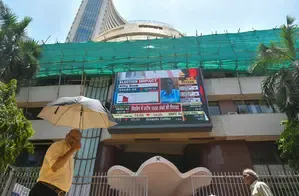Are Upcoming GST Reforms Timely and Much-Needed?

Synopsis
Key Takeaways
- GST reforms aim to simplify tax structure.
- New slabs: 5% and 18%.
- Potential tax reduction for essential goods.
- Government support may be needed for affected sectors.
- Positive economic outlook despite global challenges.
New Delhi, Aug 16 (NationPress) Prominent tax authority Ajay Rotti expressed support on Saturday for the government's initiative to reform the Goods and Services Tax (GST) framework, primarily condensing it into two tax categories of 5 percent and 18 percent.
The Central Government is considering a shift from the existing four-slab system to two main rates—5 percent and 18 percent—while introducing a specialized 40 percent bracket for luxury and sin items.
Approximately 99 percent of items currently taxed at 12 percent are anticipated to transition to the 5 percent category, while 90 percent of goods under the 28 percent slab, including white goods, will likely move to 18 percent.
During a discussion with IANS, Rotti remarked that Prime Minister Narendra Modi’s remarks on GST reforms during Independence Day were timely and essential.
“When the GST was rolled out, it featured multiple rates: 5 percent, 12 percent, 18 percent, and 28 percent—to ensure a revenue-neutral rate as states were giving up VAT, octroi, and other taxes. This structure was not sustainable for the long term,” Rotti stated.
“The initial vision encompassed two primary rates, a lower one to promote specific goods and support smaller businesses, and a standard rate, with a higher rate exclusively for sin goods,” he added.
The anticipated new configuration will likely include two major slabs: 5 percent and 18 percent, in addition to a 40 percent rate for sin products. The 12 percent slab could merge with the 5 percent category, which may benefit the average consumer.
Essential goods such as packed nuts, packaged food, butter, umbrellas, and sewing machines might experience a tax reduction from 12 percent to 5 percent.
Rotti also lauded S&P’s favorable outlook on India's sovereign rating and its stable GDP growth forecast of 6.5 percent. “This demonstrates economic resilience despite global hurdles. The US tariffs have a negligible effect on India's economy, as exports from the US constitute a minor part of India's GDP,” he informed IANS.
The macroeconomic impact is minimal, though sectors like textiles and marine exports may face difficulties, requiring government intervention, Rotti noted.
Despite global challenges, India's macroeconomic stability, tax growth, and momentum remain robust, and the GST reforms coupled with steady growth forecasts signal positive trends for the economy, he emphasized.









